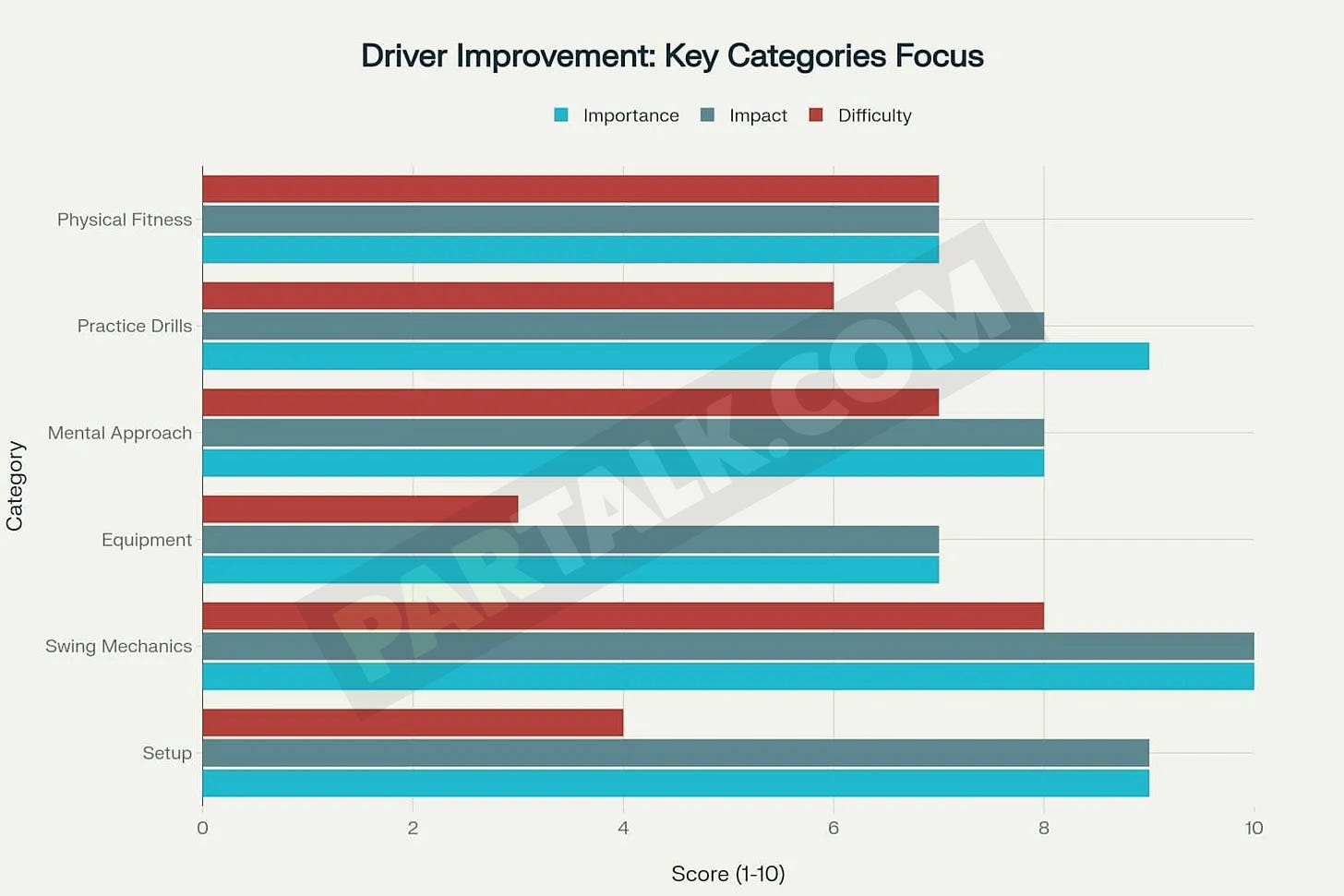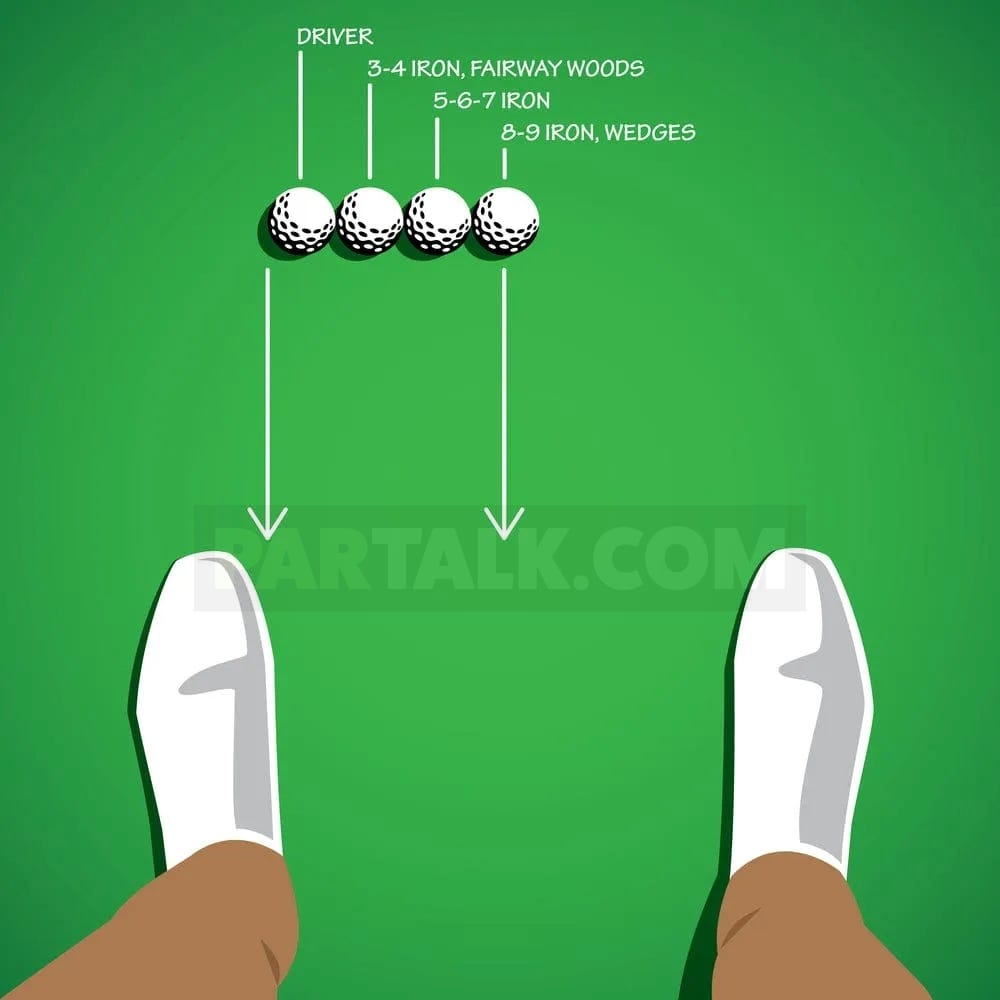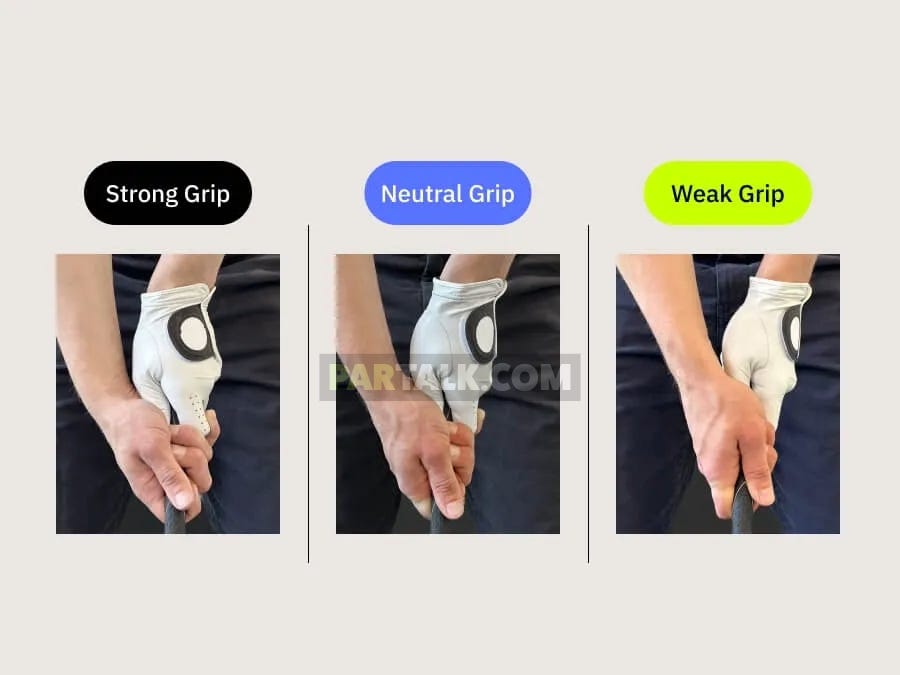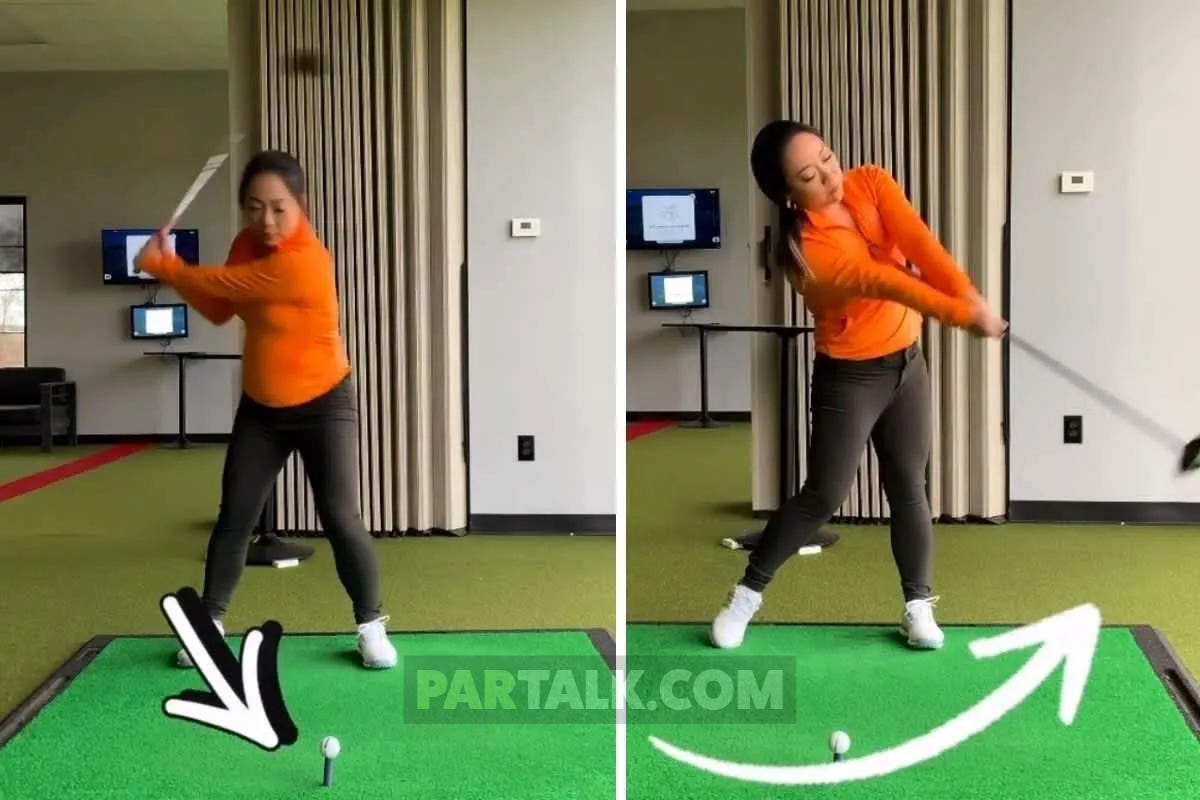Every golfer dreams of that perfect drive, the one that rockets off the tee, soars down the middle of the fairway and leaves you with a short iron into the green.
Yet for many players, the driver remains the most maddening club in the bag. A source of both ecstatic highs and crushing lows that can make or break your entire round.
One day you're bombing drives 280 yards down the center, feeling like a tour pro, the next you're helplessly watching your ball slice into the woods while your playing partners try not to smirk.
Those topped shots that dribble past the ladies' tees? They don't just hurt your score, they wound your pride.
But mastering your driver is not as complicated as you might think.
After analyzing what separates good drivers from great ones, I've identified the key elements that will transform your driving game.
Here are the practical strategies that will have you hitting longer, straighter drives consistently.
Why Your Driver Game Matters More Than You Think
Your driver sets the emotional tone for every hole.
There's nothing quite like the surge of confidence that comes from striping one down the middle.
Suddenly the pin looks attackable, your shoulders relax, and you're already planning your birdie putt.
But slice one into trouble, and you feel that familiar sinking sensation in your stomach as you watch 18 holes of potential slip away with one swing.
Research shows that driving distance accounts for roughly two-thirds of the scoring difference between players of all skill levels.
This means improving your driver can have an immediate impact on your scores.
But it's not just about distance. Accuracy matters just as much.
PGA Tour players hit about 60% of their fairways, and even a modest improvement in your fairway percentage will lead to lower scores.
When you're confident with your driver, the entire game becomes more enjoyable.
Foundation First: Setup Fundamentals That Work
Great drives start before you even swing the club.
Your setup is the foundation that everything else builds upon.
Get these basics right, and you'll immediately see improvement.
Ball Position and Stance
Position the ball just inside your lead heel.
This promotes the upward strike angle you need with a driver. Your stance should be wider than with your irons, giving you a stable base for the bigger swing.
Think shoulder-width apart or slightly wider.
Tee Height Matters
Tee the ball so that about half of it sits above the top of your driver head.
This height allows you to catch the ball on the upswing, which maximizes distance and reduces spin.
Too low, and you'll hit down on the ball like an iron shot, killing distance.
Grip and Alignment
Your grip pressure should be light.
Think of holding a small bird that you don't want to hurt.
Too much tension kills clubhead speed and feel. Many slicers benefit from a slightly stronger grip, where you can see more knuckles on your lead hand.
Alignment is key but often overlooked. Make sure your feet, hips, and shoulders are parallel to your target line.
A simple trick: lay a club on the ground pointing at your target during practice.
Quick Setup Self-Check:
Can you see 2-3 knuckles on your lead hand? (If not, strengthen your grip)
Is the ball positioned inside your lead heel? (Mark it with a tee for reference)
Are your shoulders parallel to your target line? (Have a friend check or use your phone camera)
Rate your current setup confidence on a scale of 1-10.
If it's below 7, spend extra time on these fundamentals this week.
The Perfect Driver Swing: Key Mechanics
Once your setup is solid, focus on these swing fundamentals that separate good drives from great ones.
Tempo is Everything
The biggest mistake most golfers make with their driver is swinging too hard.
Professional golfers maintain a 3:1 ratio between their backswing and downswing. This means the backswing takes three times longer than the downswing.
This tempo should be the same whether you're hitting a wedge or a driver.
The Takeaway Sets the Tone
Start your backswing low and slow.
A smooth, wide takeaway sets up everything that follows.
Many golfers rush this part, which leads to timing problems throughout the swing.
Think "wide and away" from your body in the first few feet of the takeaway.
Turn, Don't Sway
Focus on rotating around your spine rather than swaying side to side.
A full shoulder turn creates the power you need while maintaining your spine angle ensures solid contact.
Your head should stay behind the ball through impact.
The Magic of Release
Many golfers hold onto the club too long through impact, leading to slices.
Learn to let the club release naturally. Imagine you're skipping a stone across water.
Proper wrist hinge technique is essential for creating this natural release and generating maximum clubhead speed.
This motion helps square the clubface and adds speed.
Try This Right Now:
Stand up and practice the "stone skipping" motion 10 times without a club.
Feel how your lead wrist naturally releases through the motion. This is exactly what should happen in your golf swing.
Can you feel the difference between holding on versus releasing? Practice this motion before your next round.
Common Problems and Simple Fixes
Every golfer knows the heartbreak of driver demons, those soul-crushing moments when your most important club betrays you.
You've felt it: standing on the first tee with your foursome watching, only to watch your drive sail into the trees.
The walk of shame to reload. The forced smile when someone says "that's why they make more than one ball."
But here's the beautiful truth: you can conquer these demons.
The Dreaded Slice
If your drives curve hard to the right (for right-handed golfers), your clubface is open at impact.
The quickest fix is strengthening your grip. Rotate both hands slightly to the right on the club.
For more comprehensive slice-fixing strategies, check out these proven methods to eliminate your slice that work on the range and course.
You should see two to three knuckles on your lead hand at address.
Lack of Distance
Those deflating short drives that leave you 40 yards behind your buddies?
The ones that make you question whether you should take up bowling instead? They usually come from poor contact, not lack of strength.
The good news is this means you already have the power—you just need to unlock it.
Focus on hitting the center of the clubface consistently before worrying about swing speed.
Many golfers gain 20-30 yards simply by making better contact.
Inconsistent Contact
If your drives are all over the map, work on your balance and tempo.
Practice making swings at 75% effort. You'll be amazed how much more consistent you become.
Smooth and controlled beats fast and wild every time.
Diagnose Your Driver Issues:
Do your misses go consistently right? → Focus on grip and release
Do your misses vary wildly left and right? → Work on tempo and balance - Are you losing distance but hitting it straight? → Check your contact point
Do you feel off-balance after your swing? → Widen your stance and slow your tempo
Which category describes your biggest driver struggle? Focus your next practice session entirely on that one area.
Practice Drills That Actually Work
The range is where good drives are built.
Here are proven drills that will improve your driving quickly:
The Motorcycle Drill
At the top of your backswing, imagine revving a motorcycle with your lead wrist.
This motion helps square the clubface early in the downswing. Practice this slowly at first, then gradually add speed.
Feet Together Drill
Hit balls with your feet close together.
This drill forces you to use your body rotation rather than your arms. You'll be surprised how well you can hit the ball with proper sequencing.
Tee Under Arms Drill
Place a tee or glove under both armpits and keep it there throughout your swing.
This promotes the connection between your arms and body. Most golfers immediately see straighter, more consistent drives.
The Tempo Drill
Alternate shots between your pitching wedge and driver.
This helps you maintain the same smooth tempo with both clubs. Your driver swing will naturally slow down when you practice this way.
This Week's Challenge:
Pick ONE of these drills and commit to doing it for 10 swings at your next range session:
Beginner: Feet together drill (builds body rotation)
Intermediate: Motorcycle drill (improves release)
Advanced: Tempo drill with wedge/driver alternation
Track your results:
How many out of 10 felt solid? Set a goal to improve that number by 2 next week. Share your progress in our PARTALK community!
Equipment: Finding Your Perfect Match
Technique matters most, but having the right equipment can make a significant difference.
However, it's key to separate fact from fiction when it comes to golf equipment myths and what actually matters for your game.
Shaft Length and Flex
Many golfers benefit from a shorter driver shaft.
Choking up an inch or cutting the shaft to 44.5 inches often improves accuracy without sacrificing much distance.
The right shaft flex for your swing speed is key. Too stiff and you'll struggle to square the face, too flexible and you'll lose control.
Loft and Adjustability
Most amateur golfers need more loft than they think.
A 10.5 or 12-degree driver often produces better results than a 9-degree for average swing speeds.
Modern drivers offer adjustability. Use it to fine-tune your launch conditions.
Get Fitted
A proper fitting can add 20+ yards to your drives.
Once you have the right equipment, keeping your clubs properly maintained ensures they perform at their peak and last longer.
A professional can analyze your swing and recommend the optimal combination of head, shaft, and settings. It's money well spent if you're serious about improvement.
The Mental Game: Confidence Off the Tee
Golf is played between the ears, and this is especially true with the driver.
Managing your mental game can be the difference between a confident swing and a tentative one that finds trouble.
Commit to Your Shot
Choose your target and commit fully to the swing.
Indecision leads to tentative swings and poor results.
Pick a specific target, not just "the fairway", and swing with conviction.
Build a Routine
Develop a consistent pre-shot routine and stick to it.
This might include a practice swing, visualizing the shot, and taking a deep breath.
Consistency in routine leads to consistency in results.
Embrace Your Natural Shot Shape
Don't fight your natural tendencies.
If you naturally hit a fade, aim down the left side and let it curve back.
Trying to hit every shot dead straight is a recipe for frustration.
Stay Positive
Bad drives happen to everyone, even tour professionals.
The key is not letting one poor shot affect the next.
Reset your mindset and focus on the process, not the outcome.
Your Action Plan for Better Driving
Improvement doesn't happen overnight, but with focused practice, you'll see results faster.
Here's your step-by-step plan:
Week 1-2: Foundation Building
Work on setup fundamentals at home
Practice your grip and alignment
Focus on tempo with slow-motion swings
Your Personal Assessment:
Before starting, rate yourself (1-10) on:
Setup consistency: ___
Swing tempo: ___
Driver confidence: ___
(Write these numbers down - you'll check again in 6 weeks!)
Week 3-4: Range Work
Hit balls with emphasis on solid contact
Practice the key drills mentioned above
Work on one swing thought at a time
Week 5-6: Course Application
Take your improved swing to the course
Focus on committing to each shot
Track your fairways hit for feedback
Ongoing Development
Regular practice with purpose
Consider professional instruction
Monitor equipment needs
Transform Your Game Starting Today
The driver doesn't have to be your nemesis.
With the right fundamentals, consistent practice, and a positive mindset, you can transform this club into your favorite in the bag.
Improvement is a journey, not a destination.
Golf should ultimately be about finding joy beyond just your score, and mastering your driver is one of the fastest ways to increase your enjoyment on the course.
Start with the basics, setup and tempo, before moving on to more advanced concepts.
Most golfers try to fix too many things at once. Pick one area to focus on, master it, then move to the next.
Imagine this: the next time you step onto the first tee, your heart rate stays calm instead of spiking. You feel that quiet confidence of knowing your setup is solid, your swing is sound, and you're about to unleash a bomb down the middle.
No more hoping and praying, just pure, unshakeable belief.
That first drive sets up a birdie chance, and suddenly you're not just playing golf, you're attacking the course.
This is the transformation waiting for you. That's the feeling every golfer should experience.
Welcome to better driving and more enjoyable golf. Your playing partners won't know what hit them!
I hope that helps,
—Hakan
Founder, ParTalk.com | X/Twitter: ParTalkGolf | Instagram: @golfingphoto







